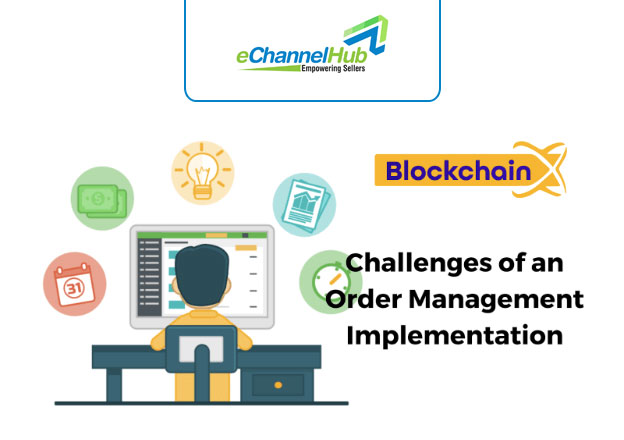Top 10 Order Management Implementation Challenges

Our experience in the selling and installation of bundled Order Management apps has shown a common set of issues experienced by clients, even if every brand and organization faces its own special hurdles. These issues prolong implementation times, increase rework, and hurt both clients and businesses. Despite the fact that we have hundreds of advice and best practices for certain applications, we think that these 10 problems might enable teams to concentrate on what really matters-delivering capabilities to your business!
- Missing or under-supported business cases
Too frequently, businesses view the actions that their competitors and sector are adopting as requirements. This frequently results in sizable, vaguely defined initiatives where success is determined only by project completion as opposed to corporate objectives. Establishing and sustaining business cases for your implementation speeds up time to value, increases team empowerment, and makes users happy.
- Not designing your system for growth
With aggressive expansion and Merger & Acquisition (M&A) strategies, complex companies may be managed using modern order management systems with ease. Order management done right may reduce hassles, costs, and time. When implemented improperly, every improvement or addition ends up taking the same amount of work as the initial design. During the early project phases, be careful to take future “brand onboarding” and “business expansion” into account. Play a number of “what-if” scenarios to make sure your system is flexible in the future.
- Attempting to complete too many tasks at once
Practically every system in your supply chain is impacted by order management. Your project will take too long and have greater risk if you try to roll everything out at once. Your business objectives may also alter numerous times before you go live due to how quickly the industry is changing. Consider making smaller, more useful releases as opposed to trying to eat the elephant in one bite. Many businesses begin with the essential information (inventory, goods, price, and customers) and introduce other channels gradually.
- Not planning your roll-out in terms of ‘capabilities’
You may determine the skills you need to onboard a certain brand, channel, or product line by breaking your business down to the ‘capability’ level. Consider onboarding the simpler brand first, then adding the other features and brand later, for instance, if one of your businesses needs extensive delivery scheduling and routing skills while the other does not.
- Too late or not at all, technical team training
Your team has to take responsibility for the solution early on, unless you intend to outsource the whole IT endeavor, including production support and ongoing maintenance. Projects that wait until go-live to transition frequently run into trouble because they lack the product knowledge necessary to make the best choices. Compared to a collaborative implementation and training method, this results in greater defect rates, longer ramp-up periods, and more distressed employees.
- Not working with a Subject Matter Expert (SME) for the Product
Within the group of skilled implementers, there is a lot of tribal wisdom and expertise gained from experience. Strong IT staff members are beneficial, but far too frequently they work WITH the capabilities of a bundled product rather than AROUND them. Instead of using the built-in configuration features of the product, they will develop pointless proprietary code to accomplish a business goal. Project risk and expense both rise as a result (development, testing, and implementation time).
- Lack of support from the apps’ surrounding ecosystem
Order management interacts with practically every system by frequently serving as a hub between several applications. When properly designed, it frequently serves as the supply chain’s central processing unit, although it requires the support of other application teams. In today’s complicated supply chain environment, fostering strong channels of communication across teams is essential.
- First phase of implementation to employ Agile methodology
Although it may seem counterintuitive and contentious, implementing a bundled order management solution using Agile approach is typically not the best course of action, at least initially. Experience has proven that a Waterfall methodology enables you to more rapidly build a strong foundation of basic skills. Things like participant modeling, inventory visibility, and catalog configuration are all closely tied to application setup. Rework is frequently required while using the Agile approach when the subtleties of each are discovered. However, after this initial foundation has been established, we do think that Agile is an excellent strategy to use.
- Not making a sufficient commitment to testing and performance testing
These things are much too frequently ignored or treated as extras. The system will, in 95% of cases, function well enough to get you through. However, the danger is substantial, particularly during peak season loads. Because of inadequate testing, we’ve seen e-commerce websites go offline for more than a week. So, from the beginning, make sure testing is a part of your plan.
- Not creating enough deployment environments and automation
There is no question that deployment mistakes are the main reason for problems when deploying to new environments. There are several more possibilities, such as missing files or forgotten setup. Even a small error can result in suffering, lost time, and revenue. Despite being easy to make and reproducible, this is frequently disregarded due to lack of time, resources, or money. You can prevent rollbacks and assure successful go-lives by investing in automation.
Author Bio
Glad you are reading this. I’m Yokesh Shankar, the COO at Sparkout Tech, one of the primary founders of a highly creative space. I’m more associated with digital transformation solutions for global issues. Nurturing in Fintech, Supply chain, AR VR solutions, Real estate, and other sectors vitalizing new-age technology, I see this space as a forum to share and seek information. Writing and reading give me more clarity about what I need.
Write For Us
Gain multichannel inventory visibility and control with eChannelHub
Learn more about eChannelHub with a free demo, tailored for your unique retail business.
Request A DemoRequest a Demo
Gain multichannel inventory visibility and control with eChannelHub
Learn more about eChannelHub with a free demo, tailored for your unique online business




